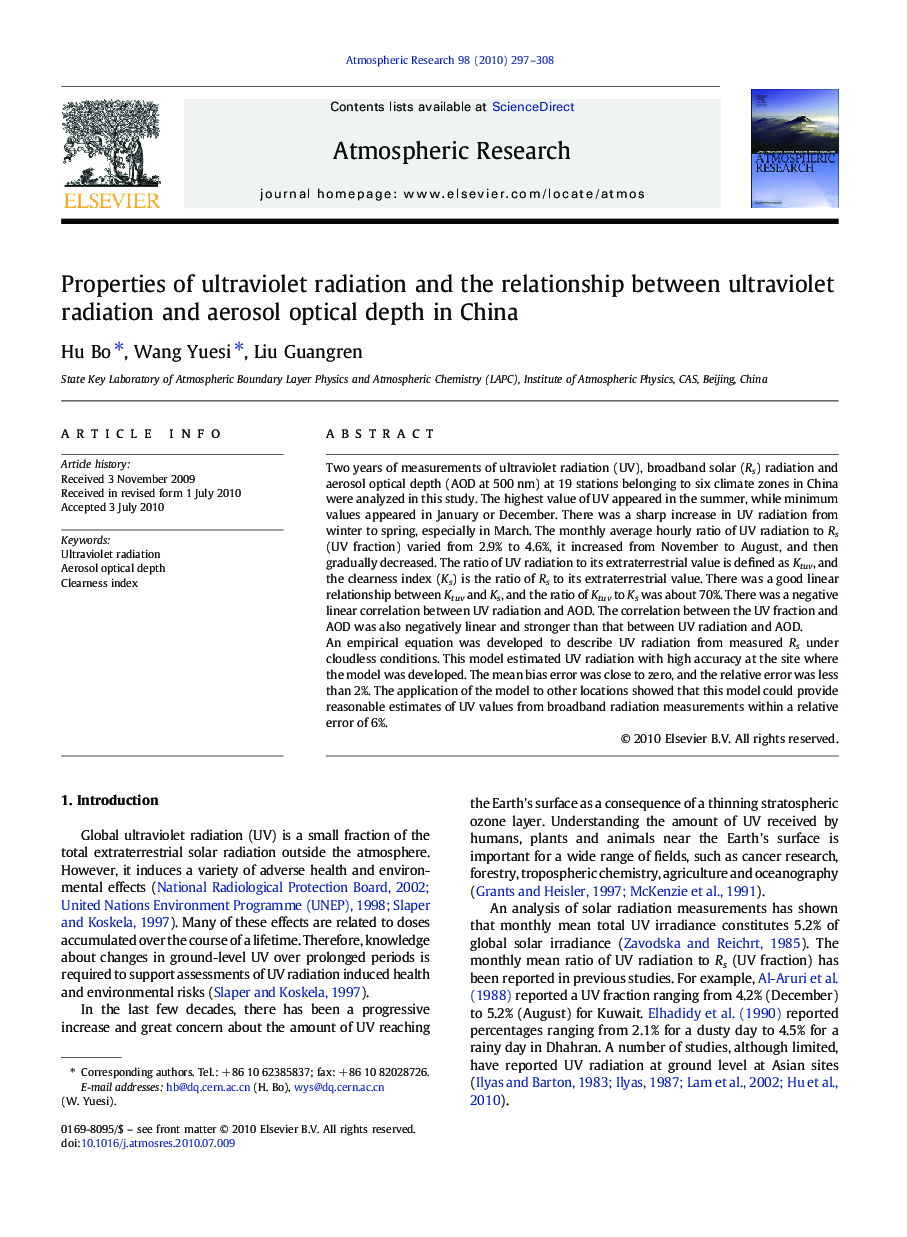| Article ID | Journal | Published Year | Pages | File Type |
|---|---|---|---|---|
| 6344164 | Atmospheric Research | 2010 | 12 Pages |
Two years of measurements of ultraviolet radiation (UV), broadband solar (Rs) radiation and aerosol optical depth (AOD at 500Â nm) at 19 stations belonging to six climate zones in China were analyzed in this study. The highest value of UV appeared in the summer, while minimum values appeared in January or December. There was a sharp increase in UV radiation from winter to spring, especially in March. The monthly average hourly ratio of UV radiation to Rs (UV fraction) varied from 2.9% to 4.6%, it increased from November to August, and then gradually decreased. The ratio of UV radiation to its extraterrestrial value is defined as Ktuv, and the clearness index (Ks) is the ratio of Rs to its extraterrestrial value. There was a good linear relationship between Ktuv and Ks, and the ratio of Ktuv to Ks was about 70%. There was a negative linear correlation between UV radiation and AOD. The correlation between the UV fraction and AOD was also negatively linear and stronger than that between UV radiation and AOD.An empirical equation was developed to describe UV radiation from measured Rs under cloudless conditions. This model estimated UV radiation with high accuracy at the site where the model was developed. The mean bias error was close to zero, and the relative error was less than 2%. The application of the model to other locations showed that this model could provide reasonable estimates of UV values from broadband radiation measurements within a relative error of 6%.
